 PHP Framework
PHP Framework Laravel
Laravel Laravel development: How to set up a development environment using Laravel Valet?
Laravel development: How to set up a development environment using Laravel Valet?As a PHP developer, in order to effectively develop applications and websites, a good development environment is essential. Laravel Valet is a very popular and easy-to-use tool that can help you set up a Laravel development environment easily. In this article, we will cover how to set up a development environment using Laravel Valet.
What is Laravel Valet?
Laravel Valet is a Mac-based development environment specifically customized for the Laravel framework. It makes it easy to configure your local development environment without the need for tedious tasks such as manually installing server software, configuring virtual hosts, or adjusting port numbers. Laravel Valet uses technologies such as Ngrok and DnsMasq to provide an efficient native development environment.
Installing Laravel Valet
Before you start using Laravel Valet, please make sure that Homebrew and Composer are installed on your system. They can be installed using the following command:
/usr/bin/ruby -e "$(curl -fsSL https://raw.githubusercontent.com/Homebrew/install/master/install)"
brew install composer
Then, use Composer to install Laravel Valet with the following command:
composer global require laravel/valet
Once the installation is complete, use the following command to run the Laravel Valet installer:
valet install
This will complete the installation and initial setup of Laravel Valet.
Using Laravel Valet
After installing Laravel Valet, you can easily create a Laravel application using the following command:
cd ~/Sites laravel new my-app
This will create a new Laravel application using the Laravel framework project and stored in the ~/Sites/my-app directory.
Next, use the following command to bind the current directory to the Valet domain name:
cd my-app valet link
After completing this operation, you can use http://my-app.test Access your application.
If you have multiple projects to manage, you can use the following command to create a global agent and assign it to the corresponding project:
cd my-app valet park
This command will create a global agent for the project using the name of the current folder Valet proxy and assign this proxy to the http://my-app.test domain name.
Using Database
When you use Laravel Valet, it uses SQLite as the default database. However, if you need to use MySQL or another database, you can follow these steps:
- Install the database
Use the following command to install MySQL onto your computer:
brew install mysql
When the installation is complete, use the following command to start MySQL as a system service:
brew services start mysql
- Configure the database
Use the following command to enter the MySQL console:
mysql -u root
This will enter the MySQL command line interface. In this interface, type the following command to create a new database:
CREATE DATABASE my_database;
This will create a new database named my_database.
- Configuring the application
Follow Laravel's regular configuration process and configure the database connection in the .env file. Update the following lines:
DB_CONNECTION=mysql DB_HOST=127.0.0.1 DB_PORT=3306 DB_DATABASE=my_database DB_USERNAME=root DB_PASSWORD=
Here, replace the name, username, and password of the database with your actual values.
- Migrate Database
After configuring the correct database connection, run the following command to create the database tables and structures:
php artisan migrate
This will create the database table and make sure to connect to the correct database.
Summary
In this article, we introduced the basic concepts of Laravel Valet and how to use it to set up and manage the Laravel development environment. Valet provides a very useful and convenient way to manage your project and debugging process, helping developers provide efficient and reliable services for their applications.
The above is the detailed content of Laravel development: How to set up a development environment using Laravel Valet?. For more information, please follow other related articles on the PHP Chinese website!
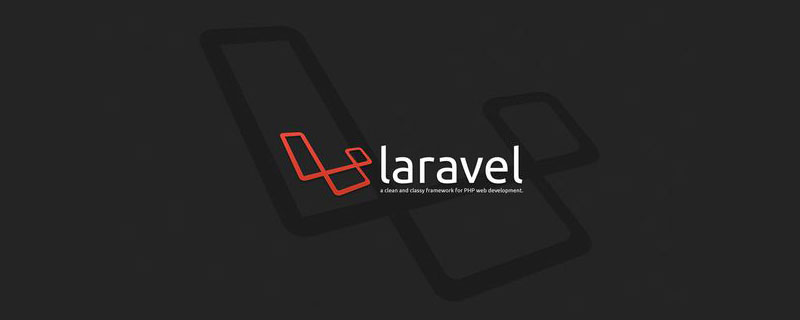 laravel单点登录方法详解Jun 15, 2022 am 11:45 AM
laravel单点登录方法详解Jun 15, 2022 am 11:45 AM本篇文章给大家带来了关于laravel的相关知识,其中主要介绍了关于单点登录的相关问题,单点登录是指在多个应用系统中,用户只需要登录一次就可以访问所有相互信任的应用系统,下面一起来看一下,希望对大家有帮助。
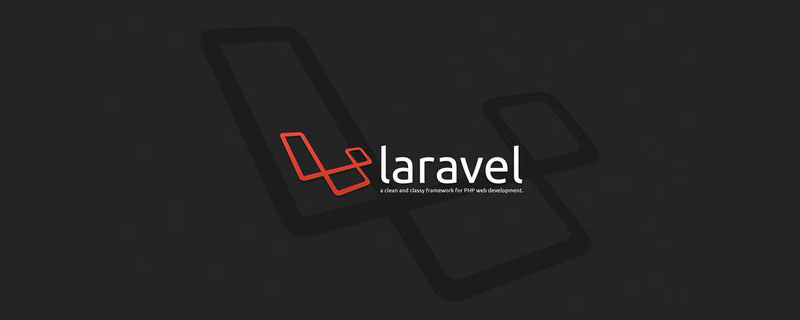 一起来聊聊Laravel的生命周期Apr 25, 2022 pm 12:04 PM
一起来聊聊Laravel的生命周期Apr 25, 2022 pm 12:04 PM本篇文章给大家带来了关于laravel的相关知识,其中主要介绍了关于Laravel的生命周期相关问题,Laravel 的生命周期从public\index.php开始,从public\index.php结束,希望对大家有帮助。
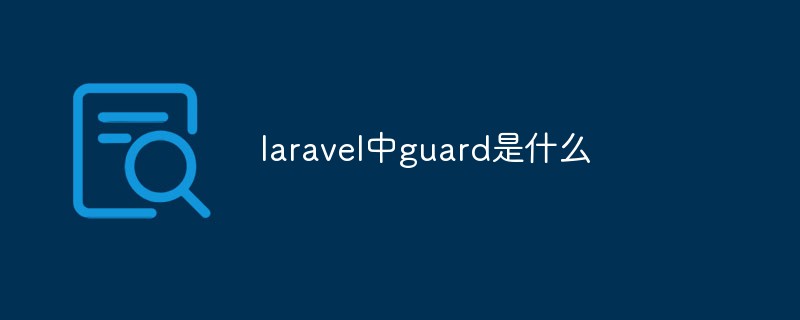 laravel中guard是什么Jun 02, 2022 pm 05:54 PM
laravel中guard是什么Jun 02, 2022 pm 05:54 PM在laravel中,guard是一个用于用户认证的插件;guard的作用就是处理认证判断每一个请求,从数据库中读取数据和用户输入的对比,调用是否登录过或者允许通过的,并且Guard能非常灵活的构建一套自己的认证体系。
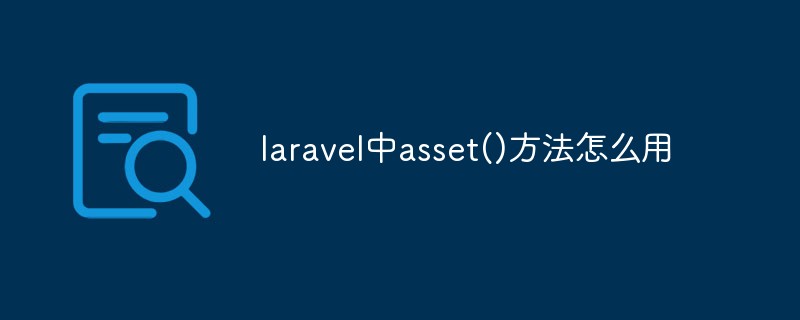 laravel中asset()方法怎么用Jun 02, 2022 pm 04:55 PM
laravel中asset()方法怎么用Jun 02, 2022 pm 04:55 PMlaravel中asset()方法的用法:1、用于引入静态文件,语法为“src="{{asset(‘需要引入的文件路径’)}}"”;2、用于给当前请求的scheme前端资源生成一个url,语法为“$url = asset('前端资源')”。
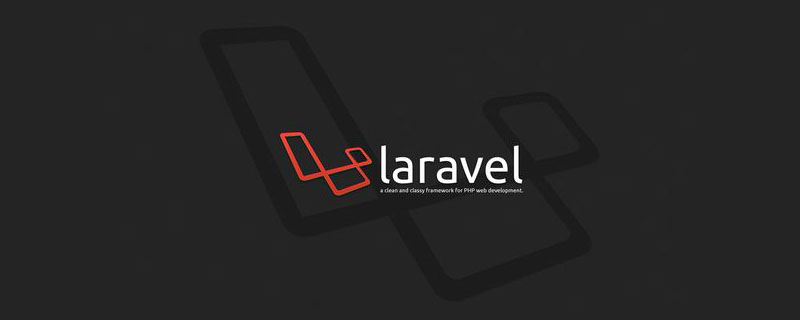 实例详解laravel使用中间件记录用户请求日志Apr 26, 2022 am 11:53 AM
实例详解laravel使用中间件记录用户请求日志Apr 26, 2022 am 11:53 AM本篇文章给大家带来了关于laravel的相关知识,其中主要介绍了关于使用中间件记录用户请求日志的相关问题,包括了创建中间件、注册中间件、记录用户访问等等内容,下面一起来看一下,希望对大家有帮助。
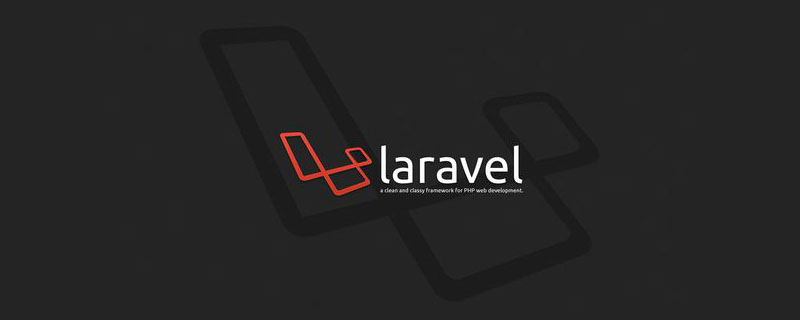 laravel中间件基础详解May 18, 2022 am 11:46 AM
laravel中间件基础详解May 18, 2022 am 11:46 AM本篇文章给大家带来了关于laravel的相关知识,其中主要介绍了关于中间件的相关问题,包括了什么是中间件、自定义中间件等等,中间件为过滤进入应用的 HTTP 请求提供了一套便利的机制,下面一起来看一下,希望对大家有帮助。
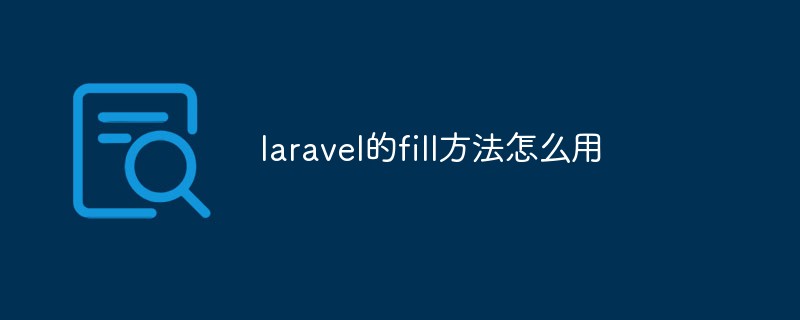 laravel的fill方法怎么用Jun 06, 2022 pm 03:33 PM
laravel的fill方法怎么用Jun 06, 2022 pm 03:33 PM在laravel中,fill方法是一个给Eloquent实例赋值属性的方法,该方法可以理解为用于过滤前端传输过来的与模型中对应的多余字段;当调用该方法时,会先去检测当前Model的状态,根据fillable数组的设置,Model会处于不同的状态。
 laravel路由文件在哪个目录里Apr 28, 2022 pm 01:07 PM
laravel路由文件在哪个目录里Apr 28, 2022 pm 01:07 PMlaravel路由文件在“routes”目录里。Laravel中所有的路由文件定义在routes目录下,它里面的内容会自动被框架加载;该目录下默认有四个路由文件用于给不同的入口使用:web.php、api.php、console.php等。


Hot AI Tools

Undresser.AI Undress
AI-powered app for creating realistic nude photos

AI Clothes Remover
Online AI tool for removing clothes from photos.

Undress AI Tool
Undress images for free

Clothoff.io
AI clothes remover

AI Hentai Generator
Generate AI Hentai for free.

Hot Article

Hot Tools

MinGW - Minimalist GNU for Windows
This project is in the process of being migrated to osdn.net/projects/mingw, you can continue to follow us there. MinGW: A native Windows port of the GNU Compiler Collection (GCC), freely distributable import libraries and header files for building native Windows applications; includes extensions to the MSVC runtime to support C99 functionality. All MinGW software can run on 64-bit Windows platforms.

DVWA
Damn Vulnerable Web App (DVWA) is a PHP/MySQL web application that is very vulnerable. Its main goals are to be an aid for security professionals to test their skills and tools in a legal environment, to help web developers better understand the process of securing web applications, and to help teachers/students teach/learn in a classroom environment Web application security. The goal of DVWA is to practice some of the most common web vulnerabilities through a simple and straightforward interface, with varying degrees of difficulty. Please note that this software

Atom editor mac version download
The most popular open source editor

VSCode Windows 64-bit Download
A free and powerful IDE editor launched by Microsoft

Dreamweaver CS6
Visual web development tools





